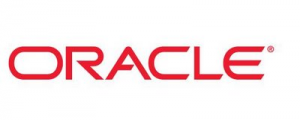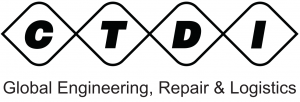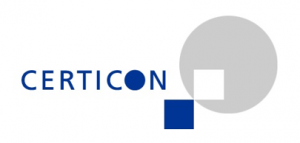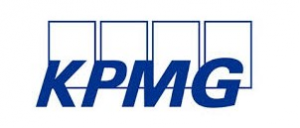Research & Development for the Entire Groupe PSA in Rüsselsheim
13.06.2018Company: Amcham
- German engineering: Research & development for all group brands
- Development lead: Responsibility for Groupe PSA light commercial vehicles
- Centers of Competence: 15 dedicated centers currently located in Rüsselsheim
- Typical Opel strengths: Seats and manual transmissions
- Future technologies: Hydrogen fuel cells as a key topic of electro-mobility
The Engineering Center in Rüsselsheim is taking over a key role within Groupe PSA. It brings typical Opel strengths to the company’s global research and development networks. Amongst others, this includes the experience with sporty chassis designed for the high speeds permitted on the German Autobahn along with US market federalisation and the AGR-certified (Aktion Gesunder Rücken e.V.) ergonomic seats to name but a few. The Rüsselsheim Engineering Center will continue to ensure the connection between German engineering, precision and affordable innovations for the Opel brand. As already announced with the PACE! plan on November 9, 2017 all new Opel/Vauxhall vehicles will be developed in Rüsselsheim. At the same time, the Rüsselsheim Engineering Center shows that it will play an integral part in Groupe PSA’s growth strategy.
The engineering team in Rüsselsheim also leads the development of light commercial vehicles (LCVs) for the entire group. This global responsibility includes the development of an LCV platform and modules from advanced development to production maturity. The development priorities also include the networking and electrification of light commercial vehicles along with automated driving. Leading the development in Rüsselsheim is a key component of the Opel/Vauxhall LCV offensive. The all-new Combo is already making its debut this year, the next-generation Vivaro will follow in 2019. And going forward, the Rüsselsheim Engineering Center will take on the global responsibility for the development of the next generation of high-efficiency four-cylinder petrol engines for all Groupe PSA brands.
A further focal point is the continuous advancement of all existing models along with the development of future vehicles.
Furthermore, Groupe PSA has currently established 15 Centers of Competence in Rüsselsheim. The development teams from France and Germany defined development areas (R&D) within a short period of time in order to unleash the full potential for the entire group. The abilities of the various competence teams complement each other in a global network – to the benefit of all five group brands (Opel, Vauxhall, Peugeot, Citroën and DS Automobiles). These Centers of Competence enable universal technical standards and optimal realisation within Groupe PSA around the globe.
Centers of Competence in Rüsselsheim: German engineering for all of Groupe PSA
Opel is now playing to some of the typical company strengths within Groupe PSA. Outstanding seats and sharp shifting manual transmissions, for example, are just two of the fundamental virtues of each Opel/Vauxhall model. Furthermore, the Opel engineers have extensive experience in fuel cell development and in the area of test automation, which is especially important in view of automated driving. 15 of these dedicated areas have now been brought together in the so-called Centers of Competence:
Future technologies:
- Hydrogen & fuel cells
- Alternative fuels
Vehicle development:
- Seats
- ADAS: parking, active safety, danger alert
- Restraint systems
- Manual transmission systems
- Geometry, dimensions and tolerances
- Electromagnetic compatibility (EMC)
- Vehicle fuel function
- Vehicle material engineering (for many areas)
- US market federalisation (vehicle and powertrain)
Methodologies:
- Test automation
- Software industrialisation
- Automation of quality checks
- 3D print of assembly tools
Center of Competence for seats: Certified by Aktion Gesunder Rücken e. V. (AGR)
Good seats are just as much part of Opel as the “Blitz” on the grille and the company can look back on 119 years of seating heritage. Reason enough to use this competence for the entire Groupe PSA. The success story of ergonomically valuable seating began in 2003 with the first AGR (Campaign for Healthier Backs) seal of approval for the Opel Signum, making Opel the first manufacturer to offer back-friendly seats in the mid-size class. The offensive for healthy seating at affordable prices was rolled out across almost the entire model range. But ergonomics in the vehicle are far more than just a comfort factor. Ergonomics also mean safety. In the event of a crash, occupants have the best chance of a positive outcome when the seat keeps them in position. Seat belts and airbags are only fully effective if this is the case.
Safe and comfortable seats at affordable prices have thus been a true Opel virtue for 15 years. Today, the Rüsselsheim-based carmaker offers AGR-certified ergonomic seats in models such as the Crossland X, Mokka X, Grandland X, Astra, Cascada, Zafira and Insignia. The performance sport seat in the Opel Insignia GSi is the latest highlight added to the line-up. The AGR-certified Opel performance sport seat combines outstanding lateral support and best long-distance comfort and offers all comfort features familiar from the Insignia model range. The integral seat in the GSi also comes with ventilation, heating, a massage function and adjustable side bolsters. These features are complemented by the high backrest with integrated headrest in the sportiest member of the Insignia line-up. Overall the sum of sporty side support and comfort features makes the new performance seat a unique offer – developed in the Center of Competence for healthy seating in Rüsselsheim.
The Rüsselsheim-based carmaker can also draw on a vast amount of expertise in the area of seat structures. The concept for the second generation of the Insignia always foresaw a modular system with the integral performance seat forming the pinnacle. This enabled all of the comfort features to be maintained in a thoroughbred sport seat.
The base structure of the performance seat also stems from Opel. The key steel elements are from the plant in Kaiserslautern. The unified development and production of the new bucket seat also results in significant weight savings. While the sport seat – without any of the comfort features available in the GSi – weighs 28 kilogrammes in the Corsa OPC which has been on the market for some years, the new integral seat with all its functionalities only adds 26 kilogrammes to the Opel Insignia GSi.
Center of Competence for hydrogen & fuel cells: More than 20 years of experience from HydroGen1 to HydroGen4
The new “hydrogen & fuel cells” Center of Competence in Rüsselsheim can draw on Opel’s extensive experience in this field. From 1997 to 2012, Opel maintained an Alternative Propulsion Center in Mainz-Kastel. 250 experts conducted research and development on fuel cell technology and electric propulsion systems in the vicinity of Rüsselsheim. During this time, the engineers gathered substantial knowledge in all areas of hydrogen and fuel cell technology – from system modelling and engineering, through hydrogen storage, safety and refuelling up to building vehicles and operating fleets. In cooperation with former parent company General Motors, this resulted in the HydroGen1, Opel’s first hydrogen fuel cell electric vehicle (FCEV) based on the first-generation Opel Zafira in 2000. The HydroGen1 served as a proof of concept for the company. It was presented to politicians, the media and other important stakeholders in Europe, Asia, Australia and the US in order to convey the opportunities of hydrogen and fuel cell technology to these groups. The HydroGen1 served as the pace car for the marathons during the Sydney Olympics, thus showcasing the clean, zero-emission technology to the public.
The HydroGen3, also based on the Opel Zafira A, was publicly presented in December 2002. Its fuel cell propulsion system was engineered as a module that could be installed in the vehicles like ordinary engines by using the same subframe. The main goal of the HydroGen3 was to compare liquid versus pressurised hydrogen storage and refuelling. For this purpose, Opel built and operated the world’s first hydrogen fuel cell vehicle with a 700 bar (10,000 psi) compressed hydrogen storage system. Based on this experience, Opel eventually decided to go for 700 bar storage technology for all its future FCEVs. Today, all car manufacturers engaged in FCEVs world-wide use 700 bar systems. During the “Fuel Cell Marathon” in spring 2004, the HydroGen3 covered a nonstop distance of 9,696 kilometres from the North Cape to Europe’s most western point in Portugal through 14 European countries without any noteworthy problems. One year later, former Formula One driver Heinz-Harald Frentzen won the Rally Monte Carlo for vehicles with alternative propulsion in a HydroGen3.
The next generation of FCEV at Opel was the HydroGen4. Its fuel cell unit (stack) with 440 cells delivered a continuous output of 93 kW. The 4.2 kilogrammes of hydrogen stored in the vehicle’s 700 bar tank system offered a driving range of 420 kilometres.
As of the end of 2008, Opel participated in the world’s largest market test of FCEVs of its former parent company General Motors. A total of 30 Opel HydroGen4 were operated in Germany within the framework of the Clean Energy Partnership (CEP), a demonstration programme for hydrogen technology funded by the German government.
An FCEV is refuelled with hydrogen. At a temperature of 80 degrees Celsius, the hydrogen is converted (together with the oxygen from the ambient air) into electricity that powers the electric motor. The only product of this reaction is pure water vapour released by the exhaust pipe. It is therefore a zero-emissions electric vehicle. FCEVs can significantly reduce CO2 emissions throughout the whole energy chain from the generation of the fuel to the propulsion of the car or even avoid CO2 emissions completely if the hydrogen is produced from renewables like wind and solar. Hydrogen is seen to play an important role in future energy systems in terms of storing renewables when they are not in demand in order to use them at a later stage when converted back into electricity.
The main difference to a battery electric vehicle is that a fuel cell vehicle produces the electricity it requires on board the vehicle from hydrogen. The decisive advantage over pure battery electric vehicles is that the car can be refuelled with hydrogen within three minutes – just as fast as a car with a traditional petrol or diesel engine. The biggest remaining challenges for FCEVs are the cost of the system (while simultaneously meeting the durability requirements) along with a nation-wide network of hydrogen filling stations. Germany plays a leading role in Europe with a view to the latter as a clear plan exists for the creation of such a filling station network. To date, there are almost 50 hydrogen filling stations operating in Germany – all of which are open to the general public 24/7. The joint venture H2Mobility will have created 100 stations by 2020, meaning that every town in Germany can be reached with an FCEV by then. In a next step, up to 400 filling stations are planned by 2025, depending on the number of FCEVs in Germany.
Currently, close examination of which approach to choose regarding fuel cell vehicles is taking place, given the world-wide level of development both in terms of technology and infrastructure, and the situation of Groupe PSA in this environment.
Center of Competence for test automation: Methodologies to master complexity and increase efficiency
Anyone in the automotive industry looking at the development of complex systems, the shortening of development times or simply the reduction of the number of prototypes built is counting on test automation. The goal is to check components for all eventualities so that when subsequently deployed, malfunctions – for example caused by software bugs – are as close as possible to zero. Therefore, the assignment for the R&D Center in Rüsselsheim is to find efficiencies as well as increase agility and quality for Groupe PSA.
This aspect can be best explained by means of an example. At Opel, Autonomous Emergency Braking (AEB) constantly monitors the environment around the vehicle, classifies complex traffic situations thanks to the combination of radar measurement and the front camera and also the driver behaviour. In critical situations, it initiates emergency braking procedures to avoid or mitigate accidents. In order to perfectly align the electronic control system with the mechatronic braking system and the sensor technology during development, a test set-up featuring all these components is undertaken. Knowing the overall system performance early in development allows design-to-cost such that the engineers can design cost-efficient solutions. The early detection of potential software faults or system latencies in simulations long before a new vehicle reaches the prototype phase means a design can easily be optimised without having spent expensive test resources on prototype vehicles. Opel has extensive experience in test automation and achieves such precise results that the simulation outcomes are used as a reference during, for example, technical approval processes for new braking systems.
Furthermore, this cuts development time drastically. On the one hand, this is cost efficient and on the other, it supports engineers in their constant race against time. A second example is infotainment systems. Currently the development cycle spans four years. Smartphone manufacturers renew their devices within one year. The customer obviously wants both systems to be able to communicate with each other seamlessly. This time delta can only be kept to a minimum with test automation.
The term “failure rate” plays a decisive role on the way to semi-autonomous and autonomous driving. The systems of an autonomous car always need to work with the highest possible probability. In purely statistical terms the distance between two accidents with injuries on German motorways currently amounts to 12 million kilometres or 120,000 operating hours. Around ten times the aforementioned distance is required to achieve a sufficient statistical significance for motorway automation tests. That would add up to 120 million test kilometres in order to guarantee maximum statistical safety. And this effort would have to be repeated for each new functionality! For instance, this is about checking the robustness and the reliability of the sensor technology during the lifetime of a vehicle, along with the need to validate and document the way the vehicle processes the sensor data and derives decisions from it. The same applies to the so-called “fail-operational” systems, i.e. technology such as the steering system that is never allowed to fail completely, but must maintain a minimal operational status. And in the improbable event that this situation arises, the vehicle then needs to react in such a way that a so-called “safe condition” for the passengers is established.
Moreover, test automation will significantly contribute to autonomous driving validation. Traditional development methods are at their limits when it comes to reproducible and traceable testing for higher levels of automated driving – Virtual Development and Test Automation are an efficient way to address these challenges via simulation. The Center of Competence is working in Research & Development on concepts and solutions for these new methodologies. For example, in the project PEGASUS, research on validation concepts for Level 3-4 vehicles (see explanation below) is being conducted.
The Groupe PSA roadmap to autonomous driving includes the following four levels:
Level 1 – Driving Assistance: We have already reached this phase for all Groupe PSA brands. Opel’s Adaptive Cruise Control, for example, regulates speed and the distance to the preceding vehicle and can even initiate automatic emergency braking if necessary. Lane Keep Assist warns when the vehicle unintentionally veers out of lane and gently turns the steering wheel to direct it back into lane.
Level 2 – Driving Partial Automation: This phase is already implemented in mass production in the DS Automobiles brand with the DS Connected Pilot which combines ACC and enhanced lateral guidance. This will be further advanced from 2020 and applied to all Groupe PSA brands.
Level 3 and 4 – Autonomous Driving: In the third step the driver is chauffeured in traffic jams (Traffic Jam Chauffeur) and on the motorway (Highway Chauffeur) and can concentrate on other things as he does not need to dedicate his full attention to what is happening on the road.
Tags: Business Development | New Products & Services | R&D |







